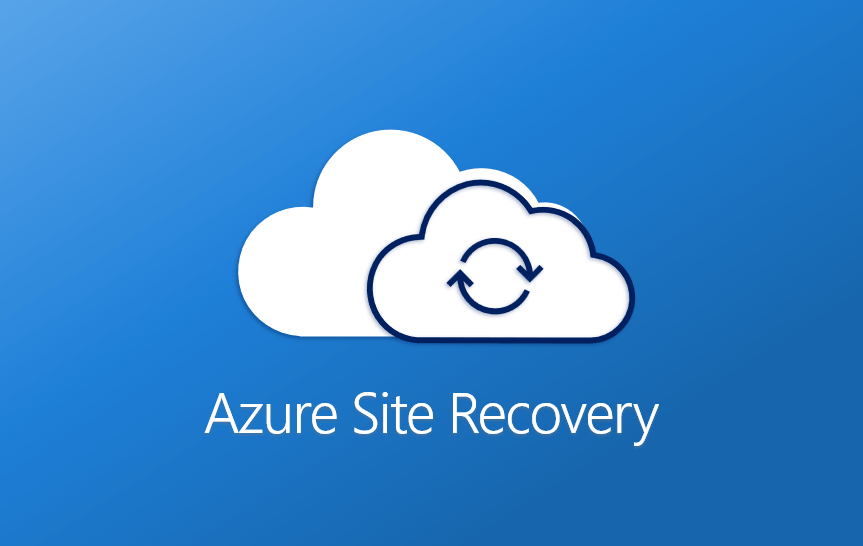
When speaking with some of our smaller sized clients, one initiative they often want to explore is disaster recovery. However, many struggle to justify the cost of a disaster recovery solution. In the past, the capital expenditure to implement a DR was usually an immovable roadblock. Small businesses simply could not afford the up-front investment and instead assumed the risk. And to be frank, I didn’t blame them.
In today’s digital age, the cloud is making solutions that were once beyond the financial reach of small businesses essential to business operations. Even better, these new necessities are at reasonable and scalable prices, so small businesses don’t have to break the bank to ensure their data and applications are protected. Microsoft offers Azure Site Recovery as a realistic solution for businesses of all sizes because all businesses deserve the peace of mind that comes with a disaster recovery plan in place. Let’s take a closer look at Azure Site Recovery and why it has become a cloud essential for small and mid-size businesses.
What is Azure Site Recovery?
Azure Site Recovery is Microsoft’s comprehensive disaster recovery as a service (DRaaS) offering that safeguards a business’s data and applications in the event of a catastrophe. Whether you are running your workloads on-premises, on Azure VMs, or even Hyper-V and VMware virtual machines, Azure Site Recovery can replicate, failover, and recover your workloads.
Azure Site Recovery enables businesses to stay up and running in the event of an outage or disaster by replicating workloads to Azure or a secondary data center. This critical cloud solution offers business continuity to organizations that rely on the cloud for key operations.
Why Do You Need Azure Site Recovery?
Disasters happen—both natural and technical—and there is no telling when or where they may occur. Unfortunately, the impact of unexpected disasters on businesses can be detrimental. Azure Site Recovery provides an answer to the concerns about successful disaster recovery.
In the event of a disaster, there are four key reasons your business needs Azure Site Recovery:
Minimized Downtime: When you replicate your workloads to Azure, your business is equipped to quickly fail over and continue operations. This will minimize your downtime and maintain customer trust in the event a disaster strikes.
Data Protection: Azure Site Recovery provides continuous data protection so you can rest easy knowing that your data is secure and recoverable. As an added layer of protection, data encryption is supported by Site Recovery for data in transit or at rest for on-premises servers and virtual machines that replicate to Azure.
Simplified Management: Microsoft’s disaster recovery solutions offer your business a consolidated management platform. You can easily manage and test your disaster recovery plans from one place with Site Recovery.
Replication Flexibility: Azure Site Recovery works for your business. The DRaaS solution allows you to replicate a wide range of workloads running across on-premises servers, or hybrid and multi-cloud environments.
What Does Azure Site Recovery Cost?
The cost for Azure Site Recovery is dependent on various factors such as the number of protected instances, storage usage, and data transfers. While I can’t tell you what Site Recovery will cost your specific business, Microsoft can help you get an estimate. You can easily estimate your Azure costs—including Site Recovery costs—with Microsoft’s pricing calculator.
When considering the costs of Site Recovery, keep in mind that every instance protected is free for the first 31 days! You can find more information about costs on Microsoft Azure’s pricing page. Microsoft is committed to providing solutions such as Azure Site Recovery at rates that are feasible for small and mid-size businesses, so the cloud doesn’t break the bank.
If you’re not sure about calculating your various needs and allowances on your own, you can work with a Microsoft Cloud partner like PEI to evaluate your environment and get a more specific number for budgeting.
What are the Benefits of Azure Site Recovery?
Azure Site Recovery should be a key part of any cloud-based disaster recovery plan. It provides businesses of all sizes with necessary functionality in the event of a catastrophe. Disaster recovery services aren’t optional, they are a necessity in this digital age.
However, that doesn’t mean Azure Site Recovery is a normal disaster recovery service. Azure Site Recovery offers five key benefits to business that extend beyond the function of traditional disaster recovery solutions.
Business Continuity: Your business can remain confident that your critical workloads will remain available. In the event of a disruption, your key business operations can remain functional.
Cost Efficient: A cloud-based disaster recovery solution lets you part ways with expensive disaster recovery infrastructure that your business must pay to maintain and eventually upgrade.
Scalability of Services: With traditional on-premises disaster recovery infrastructure, you pay whether you use it to its full capacity or not. And, if you needed more storage, you were stuck paying for more physical hardware. With Azure Site Recovery, you can easily scale the service, so you only pay for what you need. This allows for easy expansion, and even downsizing.
Automation: Azure Site Recovery allows you to leverage the power of automation. The disaster recovery service provides automated recovery and testing so you can save on time and resources.
Integration of Resources: If your business leverages other Azure services, Azure Site Recovery can seamlessly integrate into your cloud environment. This allows for easy management and optimization of your overall cloud strategy.
Azure Site Recovery for All Businesses
In a digital age where resiliency and business continuity are essential to business operations, Azure Site Recovery is a cost-effective and scalable solution for businesses of all sizes. Whether you are a five-person operation, or 500-person operation, your business deserves to know that its data and applications are protected if a disaster strikes.
Azure Site Recovery can help you protect your data, minimize disruptions to business operations, and ultimately recover quickly. As businesses adapt to the cloud era, a solid disaster recovery plan is necessary to stay competitive. Microsoft’s Azure Site Recovery is a powerful tool that all businesses should be leveraging to ensure resiliency. If you are interested in learning more about what Azure Site Recovery can do for your business, contact PEI today!
This blog was updated to reflect current Azure Site Recovery information in October of 2023.




